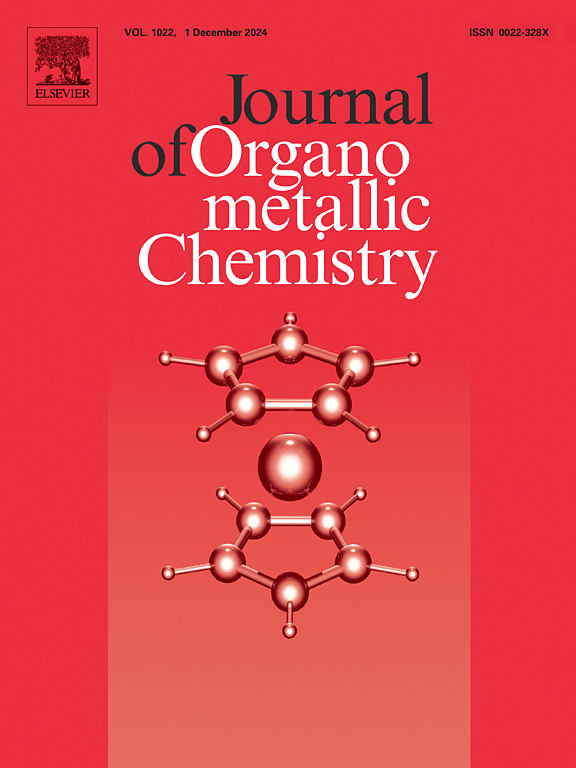Novel binary copper-iron phosphate nanoparticles as heterogeneous catalyst for propargylamine, alkene synthesis, and antibacterial efficiency
IF 2.1
3区 化学
Q3 CHEMISTRY, INORGANIC & NUCLEAR
引用次数: 0
Abstract
A novel binary metal nanoparticle catalyst; iron copper phosphate nanoparticles (FeCuP), was synthesized via a hydrothermal route under mild conditions without surfactants or post-treatment uses. Three variants of the catalyst, FeCuP1, FeCuP2, and FeCuP3, were prepared using different urea amounts. Characterization techniques, including Infrared Spectroscopy (IR), X-ray Diffraction (XRD), Scanning Electron Microscopy-Energy Dispersive X-ray Spectroscopy (SEM-EDS), Brunauer-Emmett-Teller (BET), Transmission Electron Microscopy (TEM), and XPS were employed to analyze the catalysts. The results reveal the impact of urea on nanoparticles formation, and surface structure. Among the variants, the FeCuP2 catalystexhibited the highest surface area (99 m²/g) and particle sizes below 10 nm.FeCuP2 nanoparticles demonstrated exceptional catalytic performance in the synthesis of propargylamines and alkenes through amine, aldehyde, and alkyne coupling (A3 coupling) and Knoevenagel condensation respectively, achieving high yields (100 %) and stability. Notably, FeCuP2 nanoparticles retained its catalytic activity over seven cycles of reuse. Furthermore, all catalyst samples displayed antibacterial properties, where the FeCuP2 nanoparticles showing the highest inhibitory activity against both gram-negative and gram-positive bacteria.

求助全文
约1分钟内获得全文
求助全文
来源期刊

Journal of Organometallic Chemistry
化学-无机化学与核化学
CiteScore
4.40
自引率
8.70%
发文量
221
审稿时长
36 days
期刊介绍:
The Journal of Organometallic Chemistry targets original papers dealing with theoretical aspects, structural chemistry, synthesis, physical and chemical properties (including reaction mechanisms), and practical applications of organometallic compounds.
Organometallic compounds are defined as compounds that contain metal - carbon bonds. The term metal includes all alkali and alkaline earth metals, all transition metals and the lanthanides and actinides in the Periodic Table. Metalloids including the elements in Group 13 and the heavier members of the Groups 14 - 16 are also included. The term chemistry includes syntheses, characterizations and reaction chemistry of all such compounds. Research reports based on use of organometallic complexes in bioorganometallic chemistry, medicine, material sciences, homogeneous catalysis and energy conversion are also welcome.
The scope of the journal has been enlarged to encompass important research on organometallic complexes in bioorganometallic chemistry and material sciences, and of heavier main group elements in organometallic chemistry. The journal also publishes review articles, short communications and notes.
 求助内容:
求助内容: 应助结果提醒方式:
应助结果提醒方式:


